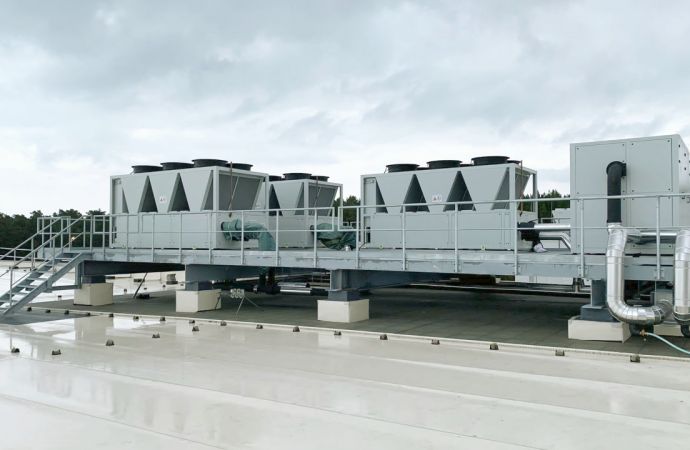Indonesian consultant Herlin Herlianika believes that, with proper training, hydrocarbon refrigerants are safe, along with being highly efficient and environmentally friendly.

Herlin Herlianika
Indonesia is fertile ground for hydrocarbon-based cooling, especially chiller and air conditioning applications, which are expected to grow in the next few years. In fact, Indonesia has identified the refrigeration and air conditioning (RAC) sector as a prime target for meeting the country's emission-reduction goals.
However, due to their flammability, hydrocarbons are largely perceived as risky which is holding the market back.
But Herlin Herlianika, a consultant in the Indonesian energy conservation and renewable energy sector – and one of the country's leading experts on hydrocarbon refrigeration – believes that hydrocarbons’ risks, as with any other technology, can be minimized with the right "attitude, character, and skillset."
Herlianika, a former President of ASHRAE’S Indonesian chapter, has played an important role in the country’s RAC sector for many years. Last month, she was one of 29 women from around the world profiled in Accelerate Magazine’s Women in Natural Refrigerants' cover story.
Accelerate Magazine spoke with Herlianika about her history with hydrocarbon systems and the standards, training, and certification she has helped put in place in the country, thereby laying the groundwork for further adoption.
// Accelerate Magazine: Can you tell us about how you started working with hydrocarbons?
Herlin Herlianika: I was introduced to hydrocarbons in 1996 through Swisscontact [a private Switzerland-based nonprofit that promotes international cooperation and economic development] and its project phasing out R12 as part of a Montreal Protocol implementation program.
They taught us how to replace R12 with blended propane/isobutane (R290/ R600a). Since then, I have believed that this NatRef is the most sustainable refrigerant because it exists in nature and will not harm the environment.
Together with my colleagues from both the business sector and academia, we continued to promote hydrocarbons as an environmentally friendly refrigerant with higher energy efficiency in the R12 phase-out program. We developed training and certification schemes on how to safely handle this flammable refrigerant.
In addition, I introduced hydrocarbons as a replacement to R12 for Unilever Indonesia since their ice cream division assets were still using R12 in 2004.
Unilever Indonesia then decided to replace R12 with R290/R600a for all of their chest freezers throughout Indonesia with a retrofitting scheme. This was my first national project with this flammable NatRef.
When HCFCs were being phased out, I realized that everybody still doubted the use of R290 as a replacement refrigerant because of the flammability issue. I fully understood that Indonesian RAC technicians were not yet properly handling this flammable refrigerant, but I thought that this fact would not stop me from supporting my country in preparing a better structure for flammable refrigerant applications.
// Accelerate Magazine: As a technical expert for the Green Chillers NAMA (Nationally Appropriate Mitigation Action) R290 project in Indonesia in 2015, you helped specifically with technician training. Why do you believe training is so important?
Herlin Herlianika: We know that R290 is a flammable refrigerant and everybody says it is dangerous. But it is not that dangerous actually if [technicians] have the attitude and character needed to handle it safely and in an environmentally responsible manner.
However, one of the biggest issues we face today is that there are thousands of technicians in Indonesia who have no background in this sector and do not yet have this attitude. They mostly only learn by doing — on the job and with no formal education. This is why we are trying to upgrade their skills and their attitudes on how to handle this flammable refrigerant through establishing standards and providing training.
But training itself is not enough for the technicians because knowledge alone won't guarantee that they will apply it on the job. In addition to knowledge, they should also have the proper skills and attitude. After the training, we have to properly assess whether or not they have those three competencies. If they pass, then we certify them. That's the certification scheme and its structure is based on, and in line with, the national level of competencies for RAC technicians.
// Accelerate Magazine: Hydrocarbons have been used in the past and continue to be seen today as quick fix drop-in replacement refrigerants for certain types of equipment. What is your opinion of this activity in the industry?
Herlin Herlianika: Since most technicians only use hydrocarbon refrigerants as drop-in replacements for equipment that is not designed for flammable refrigerants — which is not totally safe — I am continuing to promote this flammable refrigerant application for initial charging in equipment for which it is designed.
One local Indonesian manufacturer has provided chillers designed for R290 use that have already proven their energy performance and have been certified as safe installations. They are getting orders for many industrial chiller applications, so it is a good sign for me to keep my faith in this refrigerant.
We are waiting for R290 single split air conditioners to be produced locally in Indonesia and I hope that this will have a big impact in the world, showing that it is time to use this refrigerant as a sustainable green technology.
Many pilot projects with R290 chillers and packaged units have already demonstrated good energy performance and have been certified as safe installations. These pilots can be used as energy efficiency models for the RAC sector, and they will ultimately support Indonesia in achieving its national energy conservation targets.
Related stories



